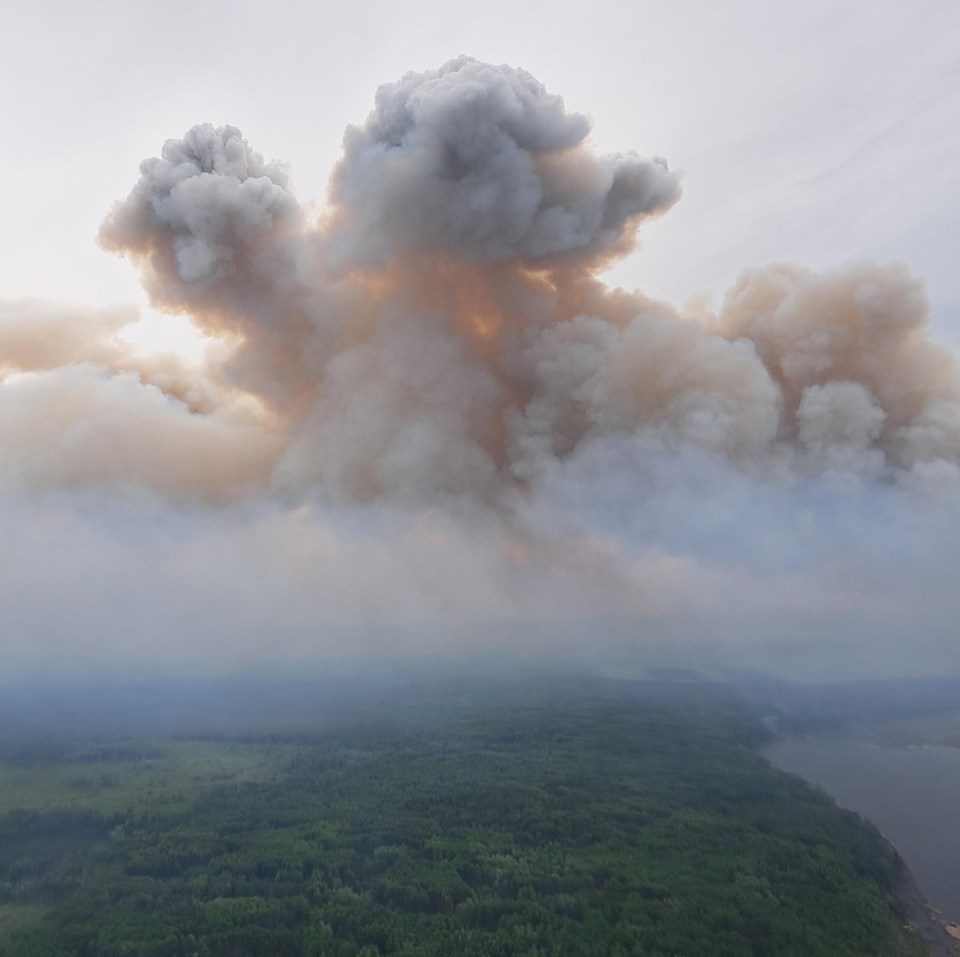Wildland firefighters battling a blaze in northeastern B.C. were preparing for a challenging weekend as strong winds could push flames closer to the small community of Kelly Lake, about 80 kilometres south of Dawson Creek.
Karley Desrosiers, a fire information officer with the BC Wildfire Service, told a news conference Friday that strong southwest winds the day before had pushed the Kiskatinaw River fire north and south of Kelly Lake.
While the flames didn't reach the community of about 75 residents, an eight- to nine-kilometre stretch crossed over the Alberta boundary, she said.
A cold front Friday, which was forecast to begin around 5 p.m., was expected to shift what she called "strong, erratic, gusty winds."
"So the wind will be pushing the fire from the northwest towards the southeast," she said.
"So (with) the wind pushing the fire from the north, there is the potential for that flank that's adjacent to the community, north of Kelly Lake, to move more toward the community."
Desrosiers said flames were "within a kilometre, absolutely, more likely a couple hundred metres, of the community" as of early Friday afternoon and crews were working adjacent to homes to establish "containment" ahead of the wind shift.
A bulletin on the BC Wildfire Service website said crews were using heavy equipment to construct guards north of the community.
The Peace River Regional District had issued a statement late Thursday urging all Kelly Lake residents under evacuation order to leave immediately, saying the advancing wildfire could not be contained.
Fire officials told the briefing that crews were in Kelly Lake on Thursday putting out "spot fires" that had been ignited by falling embers in shrubs and grasses, and noted sprinkler systems were up and running.
The blaze, which was listed as about 119 square kilometres in size as of Friday, is one of two wildfires of note in the province.
Desrosiers said Sunday was expected to be another "challenging" day for the crews.
"As we progress through the day and through the weekend, temperatures are expected to rise, humidity will decrease, and winds will just become stronger," she said.
"So (there are) a number of challenging days ahead of us, and certainly more aggressive fire behaviour, and the potential is there for more significant growth."
The wildfire service's latest provincial situation report said the passing cold fronts would bring very strong winds and the potential for "extreme fire behaviour" throughout the Dawson Creek, Fort St. John and Fort Nelson fire zones.
The second wildfire of note in B.C. is the Summit Lake fire, which has burned about 83 square kilometres along the Alaska Highway west of Fort Nelson.
The regional district also issued an evacuation alert for people to be ready to leave at short notice Thursday night due to another out-of-control blaze, dubbed the Sundance Lake fire, which the wildfire service said was about 40 hectares in size.
A bulletin from the service on Friday said very hot and dry conditions were forecast across the province this weekend, with Interior and southeast regions expected to see temperatures about five to 10 degrees above seasonal norms.
There were about 70 wildfires active across B.C. on Friday, most of which are located in the northeastern corner of the province.
This report by The Canadian Press was first published June 6, 2025.
Brieanna Charlebois and Ashley Joannou, The Canadian Press



